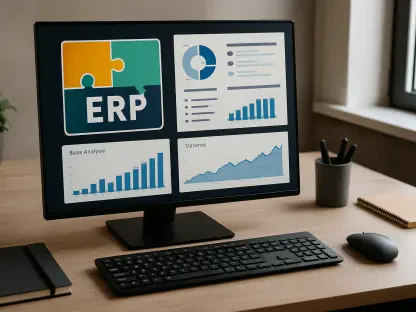In this insightful conversation, we are joined by Anand Naidu, a seasoned expert in development, possessing extensive knowledge in both frontend and backend technologies. Anand shares his deep expertise on managing data as a strategic product—a crucial shift for organizations looking to harness data’s full potential in today’s digital landscape.
Can you explain the concept of treating data as a product? How does this differ from traditional data management practices?
Managing data as a product involves recognizing it as a dynamic asset with a lifecycle. Unlike traditional data management, which often focuses on storage and compliance, this approach emphasizes data ownership, measurable goals, and continuous enhancement. It’s about seeing data as a core resource that can be monetized and a driver for decision-making.
What are some common mistakes companies make when trying to extract value from their data?
Many organizations fall into the trap of treating data as a byproduct rather than a primary asset. They invest heavily in tools and infrastructure but often overlook the critical step of embedding data usage into their strategy, leading to underutilized potential. They also fail to standardize and efficiently manage data across departments, which further hinders its value extraction.
Why is it important to have data owners for both data assets and data solutions?
Having designated owners ensures accountability and aligns the strategy with organizational goals. Data asset owners focus on maximizing data utility and accessibility, while data solution owners work on delivering this data effectively to meet specific business outcomes. This dual ownership creates a seamless flow from data creation to its application, driving better business results.
How do data assets differ from data solutions? Can you give some examples of each?
Data assets are essentially curated datasets intended for broad usage across the enterprise. Think of them as raw materials, like customer databases or sales records. On the other hand, data solutions are the applications or tools developed to extract insights from these assets, such as dashboards or predictive algorithms, which deliver actionable intelligence.
What metrics should data asset owners focus on? How about those managing data solutions?
Data asset owners should concentrate on metrics like data quality, reuse rate, and internal adoption. For those managing data solutions, the focus shifts to more business-oriented metrics like cost efficiency, user satisfaction, and the tangible business impact derived from the data outputs.
How does customer satisfaction play a role in managing data like a product?
Customer satisfaction is paramount; it influences how data assets are crafted and evolved. For data products to deliver value, they must meet user expectations consistently. Engaging with stakeholders to gather feedback and iteratively refine offerings is critical, ensuring the data remains relevant and valuable.
What are some pricing strategies for data assets and solutions?
Pricing strategies vary significantly. Data assets might be priced through chargebacks, encouraging efficient use within the organization. Solutions, however, might have direct pricing models when external customers are involved or indirect pricing for internal use, focusing more on their value contributions rather than revenue generation.
Why is profitability a key component when managing data as a product?
Profitability emphasizes the end goal of treating data as a product—it has to add value. This means balancing the costs of data management with its potential revenue or cost-saving benefits. Ensuring that data initiatives are profitable helps justify investments and aligns data projects with business objectives.
What are the limitations of traditional data governance models concerning value creation?
Traditional data governance often centers on compliance and data protection, which can limit innovation. These models don’t typically encourage the creation of reusable data assets for ongoing use. They may stifle creativity needed for leveraging data for strategic advantage, focusing instead on protecting rather than utilizing data.
What essential steps should data leaders take to identify valuable data assets within their organization?
Data leaders should conduct a comprehensive audit to identify data assets that are well-curated, clean, and strategically relevant. Understanding which datasets can drive multiple initiatives and how they align with overall business goals is crucial. Assigning ownership and framing these assets within a product lifecycle approach is essential for their development.
How can companies start transitioning to this new mindset of data management? Can you give examples of small steps to begin this transition?
Begin by focusing on a small but impactful dataset, assigning clear ownership, and developing basic metrics for success. Encourage a cultural shift towards data-driven decision-making across all levels, fostering an environment where data is seen as a strategic asset. Start by integrating data product thinking into smaller projects before scaling up.
How does managing data like a product aid in achieving digital transformation goals like AI and automation?
Data managed as a product provides a solid foundation for AI and automation, as these technologies require high-quality, accessible data to function effectively. It ensures that data is not only available but also continuously refined and aligned with emerging business requirements, facilitating more efficient and impactful technological advancements.
What advice would you give to companies that are not inherently information businesses but want to adopt these practices?
Focus on data that has the potential to impact multiple areas within the business. Even if you’re not selling data directly, you can leverage it to enhance customer experiences, improve operational efficiency, or drive innovation. The key is building a mindset that prioritizes data as a strategic asset, not just a byproduct.









